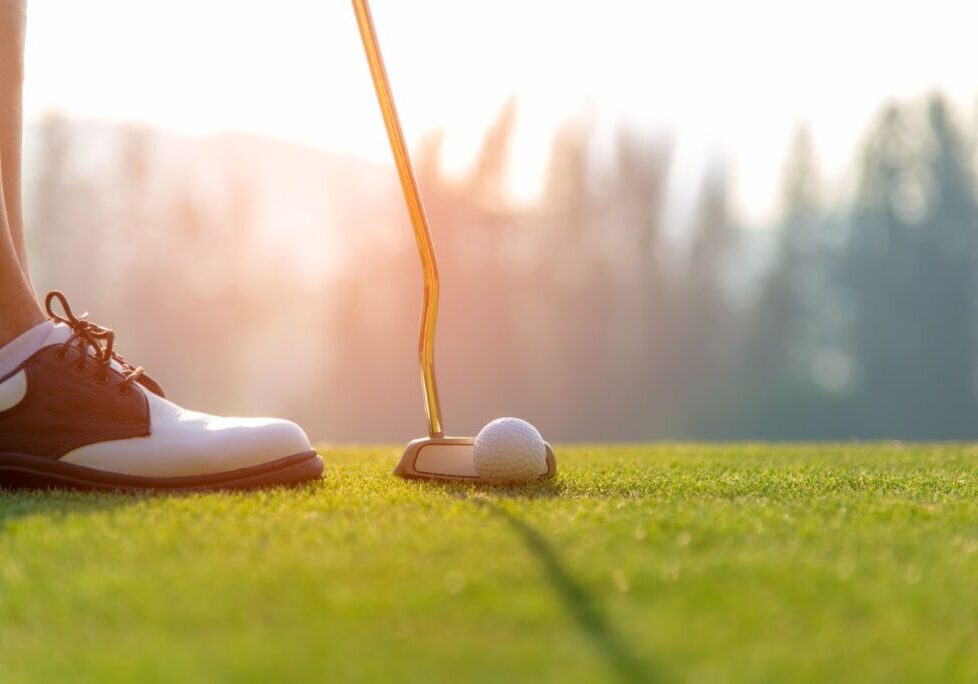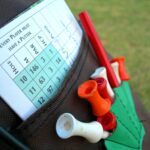How to Find Your Perfect Putter Style

How to Find Your Perfect Putter Style
Putting can be a very frustrating part of any golfers game. It is generally the shortest distance the ball will have to travel, yet it takes some great feel, skill, finesse, and green reading ability. But one of the first things to consider is your weapon. In this article, we break down how to find your perfect putter style.
There are many factors that golfers must consider when choosing a putter. The good news is technology has come a long way in the field of putting. The bad news is putters are definitely not a one size fits all type of club.
The three most important factors when searching for your perfect putter are your type of putting style or swing, the shape of the putter head, and the type of putter shaft.
Your Style of Putting
When it comes to style of putting, there are basically two options. You can take the putter blade away in a straight back fashion and straight follow through, or you can take the putter back in a bit of an arc stroke.
The type of stroke you use can greatly affect which type of putter you should select.
The straight back method is, as the name implies, a very straight take away backwards, followed by a very straight follow through. Straight back straight through type putters generally benefit from more of a mallet style putter since the face of these are more balanced and promotes a straighter stroke naturally.
Arc type golfers usually benefit more from a blade type putter (or an Anser style putter as it has been called). These generally have greater tow weighting allowing the face of the putter to square up to the ball at impact.
Head Shape Matters
We have analyzed which type of putting style your stroke is, and we have let you know the better putter type for each style of stroke. So now let’s look at the different putter head shapes and break down the differences.
The Blade
The blade type putter is one of the oldest styles around. It dates back to the birth of golf. It is a simple design (like one you would see at a putt-putt or mini-golf course). But again, with all of the technology improvements, blade shapes have changed a bit as has the feel.
Newer blade putters are similar to blade style irons where is more of a muscle back. Similar to the irons, when you hit the sweet spot in a consistent manner, they perform amazing.
The key to a good blade putter is in the toe balancing or toe hang. This toe weight allows you to open and close the putter face during your stroke which is very important in an arc type swing like we mentioned.
The Mallet
The mallet putters are generally a bit larger and have a much more forgiving face than a blade putter does. This benefits the straight back straight through swing style because of the large heavy pendulum style head.
There is generally a large center line alignment and a soft feel on impact with these style of putters.
Again, with recent advancements in technology, we have seen mallet putters morph into what is called a Moment of Inertia putter (or MOI putter). These are similar to mallet putters in head size and shape but are usually a little heavier.
They are very forgiving putters and are great for a high handicap golfer. There are even some PGA Tour players that choose these putters due to the weight and feel during their putting stroke.
The Shaft
Last but not least is the putter shaft. This part of the putter is often overlooked by the average golfer. Most putters have the connection of the shaft and the grip to he back or the heel of the putter. However, some putters offer a toe option or a center shaft.
What is the difference of the shaft connections you ask? The center shaft connection are generally face balanced, meaning there is equal amounts of weight in both the heel and the toe of the putter. If you keep your eyes directly over the ball when you putt, this can help you with a straight back and straight through stroke.
If you use the arc style swing, the heel connection is going to be more beneficial because it allows for the club face to open and close upon putter swing.
The length of the shaft is of importance as well. Some shaft lengths can help in getting the golfer into a good posture, others are based on the players arm length and comfort in lining up over the ball on set up. Some even choose to use the long upright putter shaft, however, there have been rule changes that no longer allow “belly anchoring” so consider that if going for a long shaft.
Choose Your Putter Wisely
The three basic aspects we have reviewed should give you all of the foundational information you need to begin narrowing down your putter search. From here, you will have to get out and try a bunch of them. Luckily most golf stores have a practice style putting green inside the store for just these purposes, and Pro Shops will have real outdoor practice greens as well.
One you have picked your style of putter, get out there and try a bunch. See which face styles you like, what weight feels best, which shaft length feel comfortable, and which alignment looks right to you. Best of luck in your putter search, and good luck needing to use the putter as infrequently as possible!





